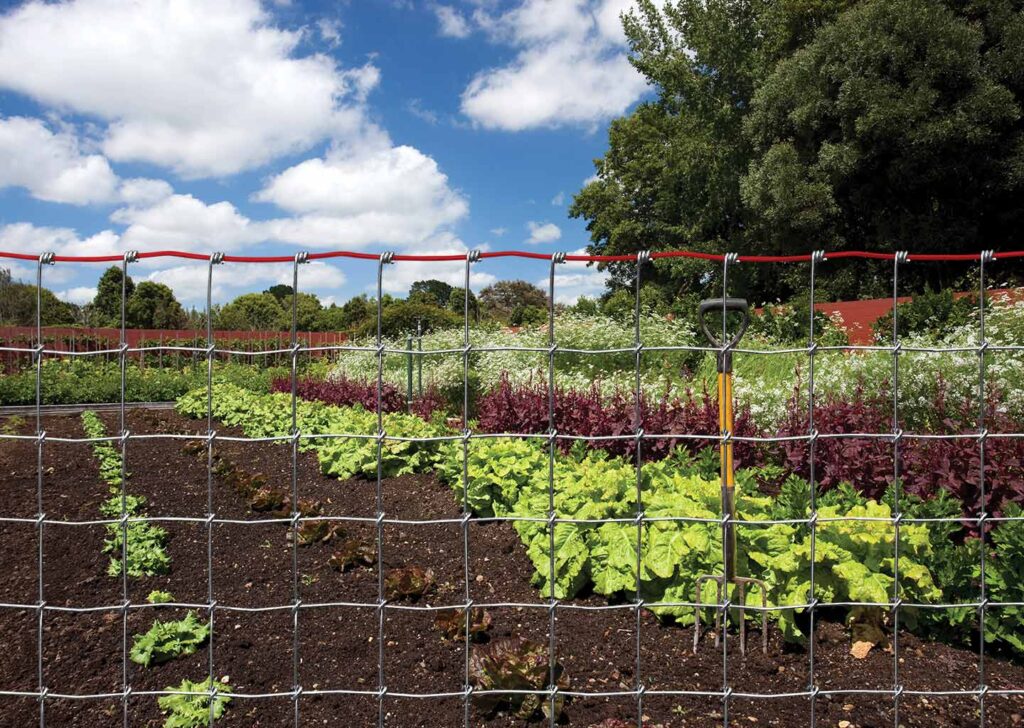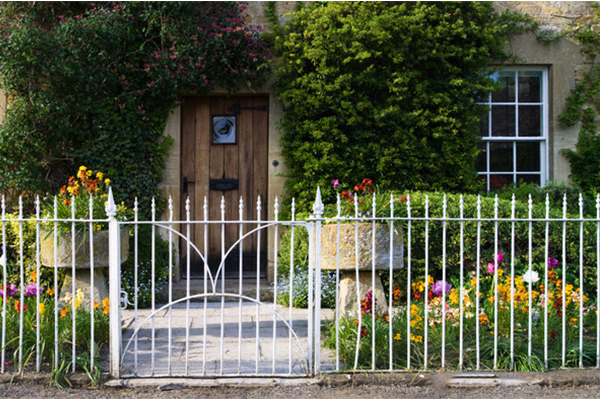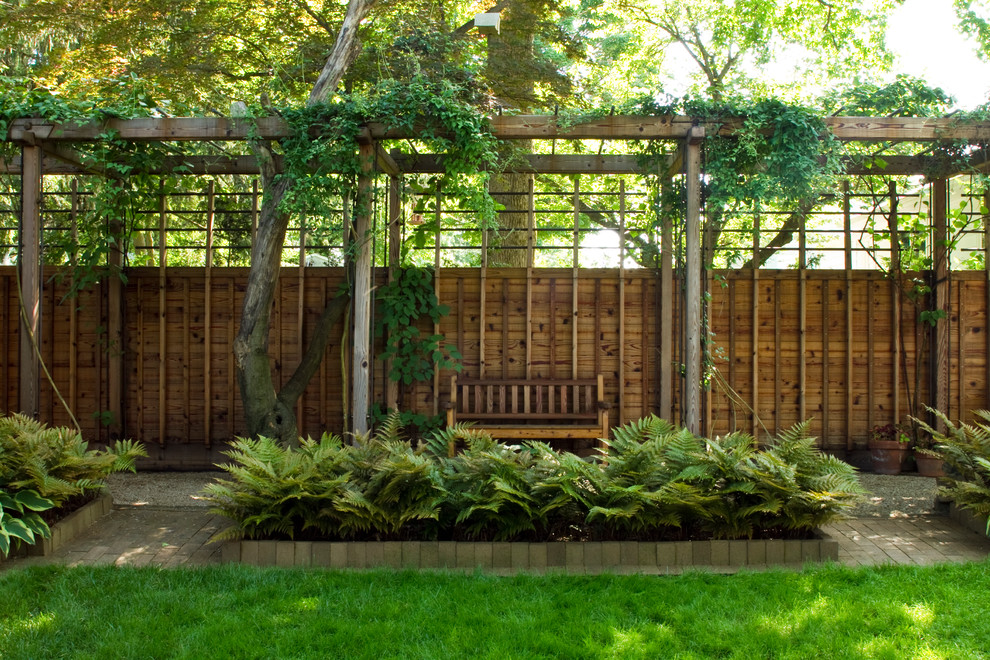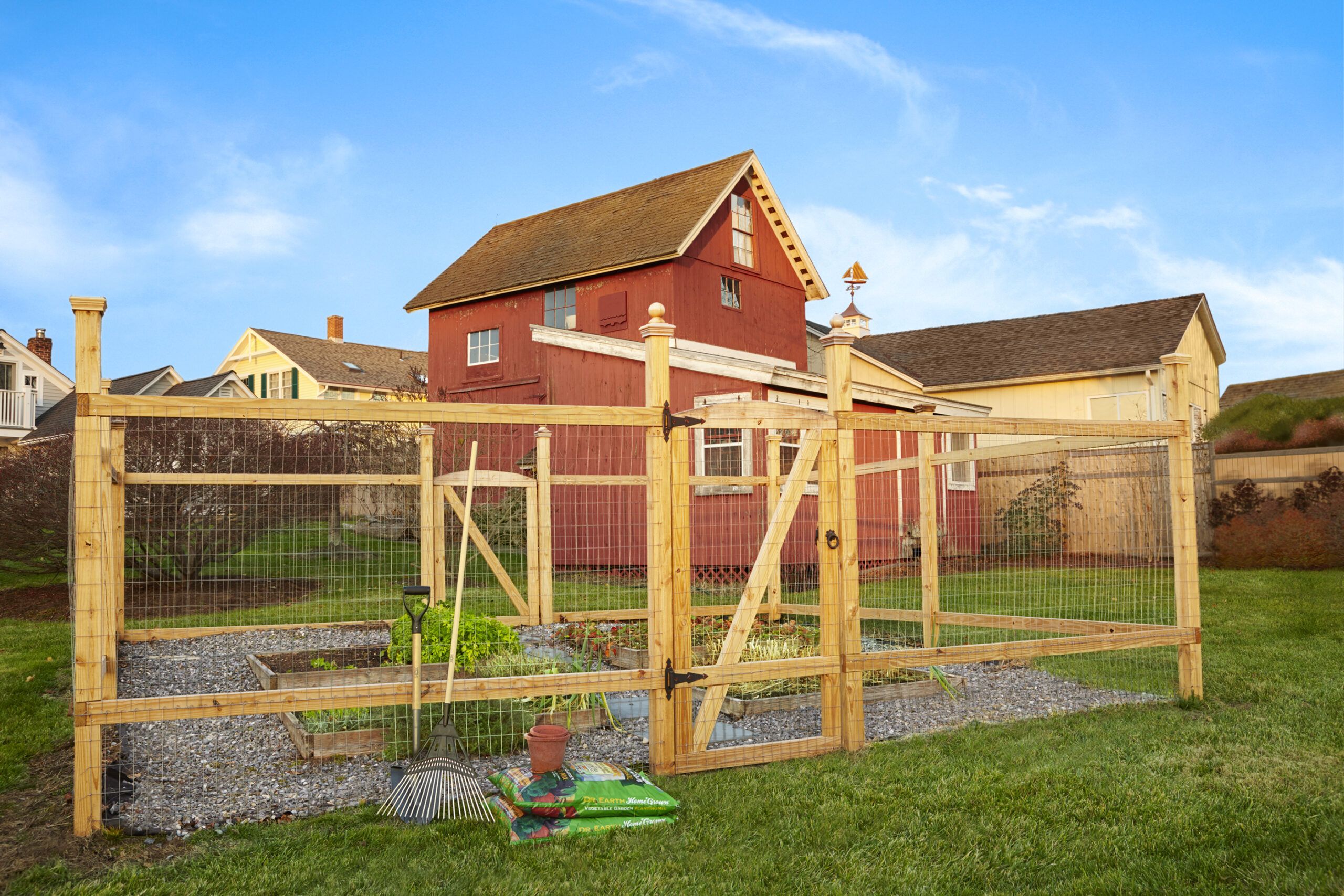Have you ever thought about securing your garden with a fence? It’s a great way to keep unwanted critters out and protect your plants and flowers. Plus, it can add a touch of style to your outdoor space. But where do you even begin when it comes to choosing the right fence for your garden? Don’t worry, we’ve got you covered. In this article, we’ll dive into all the aspects of securing your garden with a fence. From different materials and styles to installation tips and maintenance tricks, you’ll learn everything you need to know to make an informed decision. So, let’s get started!
When it comes to choosing the perfect fence for your garden, there’s so much to consider. You may be wondering which material is the best, or what style will complement your outdoor aesthetic. Well, we’ve got good news for you. In this article, we’ll explore the pros and cons of various fencing materials, such as wood, vinyl, and metal. We’ll also discuss different fencing styles, from classic picket fences to modern privacy screens. Additionally, we’ll provide you with some helpful tips on how to install your fence properly and ensure it stays in great shape for years to come. So, if you’re ready to secure your garden with a fence, keep reading and get ready to become a fencing expert!
Securing Your Garden with a Fence
A fence is an essential aspect of any garden, providing security, privacy, and aesthetic value. Whether you want to keep pets and children safe, mark your property boundaries, or enhance the overall appeal of your garden, choosing the right fence is crucial. This article will guide you through the various types of fences available, factors to consider when choosing a fence, the installation process, maintenance and repair tips, enhancing security, decorative ideas, using fences for privacy, dealing with common fence issues, alternative fence options, selecting the right fence contractor, understanding fence laws and regulations, DIY fence installation tips, and more. By the end of this article, you will have all the information you need to secure your garden with a fence.

Types of Fences
Wooden Fences
Wooden fences are a popular choice due to their natural beauty, flexibility in design, and affordability. Whether you opt for a classic picket fence, a privacy fence, or a decorative wooden fence, wood can add warmth and character to your garden.
Metal Fences
Metal fences, such as wrought iron or aluminum, offer durability, strength, and a timeless look. They are ideal for both residential and commercial properties, providing security without sacrificing style. Additionally, metal fences require minimal maintenance and come in various designs and heights.
Vinyl Fences
Vinyl fences are known for their versatility, low maintenance, and longevity. They can mimic the appearance of wood or metal, but with added benefits like resistance to rotting, fading, and insect damage. Vinyl fences are an excellent choice for those seeking a long-lasting and hassle-free solution.
Chain Link Fences
Chain link fences provide practicality, affordability, and security. These fences are commonly used for residential, commercial, and even industrial purposes. With optional privacy slats, chain link fences can also offer some degree of privacy while maintaining visibility.
Factors to Consider When Choosing a Fence
Budget
Determining your budget is the first step in choosing a fence. Understanding how much you are willing to invest can help narrow down your options and ensure you select a fence that meets your needs without straining your finances.
Purpose of the Fence
Identifying the purpose of your fence is crucial. Are you looking for security, privacy, or both? Do you need a fence to keep pets or children contained? Understanding the primary function of your fence will guide you towards the most suitable materials and designs.
Privacy
If privacy is a priority, certain fence types like wooden or vinyl fences provide more seclusion than a chain link fence. Considering your privacy needs will influence the height and style of the fence you choose.
Maintenance
Different fences require varying levels of maintenance. Wooden fences, for example, may need regular staining or sealing, while metal and vinyl fences generally require less upkeep. Consider your willingness and ability to maintain your fence to make an informed decision.

Installing a Fence
Preparation
Before installing a fence, it is essential to assess your property, determine the boundary lines, and locate any underground utilities. Understanding local zoning regulations and obtaining necessary permits should also be taken into account during the preparation phase.
Marking Out the Fence Line
Marking out the fence line ensures accuracy during installation. Using stakes and string, outline and visualize the placement of your fence.
Digging Post Holes
Properly digging post holes is vital for fence stability. Ensure the depth and width of each hole align with industry standards, taking into consideration the type of soil and climate in your area.
Setting the Posts
After digging the post holes, it’s time to set the posts. Use a level to ensure they are vertically aligned and securely anchored. Allow the concrete or appropriate setting material to cure before proceeding with the rest of the fence installation.
Choosing the Right Fence Height
Legal Restrictions
Check your local building codes and regulations to ensure compliance with fence height restrictions. Certain areas have specific limitations on the height of fences, especially near property lines or in front yards.
Security Considerations
If security is a concern, consider a taller fence that will discourage intruders from entering your property.
Privacy Needs
When seeking privacy, selecting a fence with adequate height is essential. Taking into account the average eye level and the visibility from neighboring properties will help determine the appropriate fence height for your privacy needs.

Fence Maintenance and Repair
Cleaning and Washing
Regularly cleaning and washing your fence will maintain its appearance and longevity. Use appropriate cleaning solutions and techniques based on your fence material.
Regular Inspections
Periodically inspect your fence for any signs of damage, such as loose boards, broken panels, or rusted sections. Early detection allows for prompt repairs, preventing further deterioration.
Repairing Damaged Sections
When a fence section becomes damaged, repair or replace it promptly. Ignoring small issues can lead to more extensive damage and costly repairs in the future.
Repainting or Re-staining
If you have a wooden fence, repainting or re-staining it can revitalize its appearance and extend its lifespan. Follow proper painting or staining techniques to ensure a smooth and long-lasting finish.
Increasing Fence Security
Add Security Gates and Locks
Installing a secure gate with a sturdy lock can enhance both the security and accessibility of your fenced area.
Install Motion Sensor Lights
Motion sensor lights illuminate your fenced area when activated, deterring potential intruders. They also enhance visibility during nighttime activities.
Consider Security Cameras
Installing security cameras can provide an extra layer of protection for your property. Strategically placing them along your fence line can help monitor any suspicious activity.

Decorating Your Fence
Adding Potted Plants
Enhance the beauty of your fence by incorporating potted plants. Hanging planters or attaching flower boxes to the fence creates a vibrant and inviting atmosphere.
Hanging Decorations
Hang decorative items such as wind chimes, bird feeders, or decorative plaques on your fence. These small touches can add personality and charm to your garden area.
Painting or Staining
Take your fence’s aesthetics to the next level by painting or staining it in colors that complement your garden or house exterior. Ensure you choose paint or stain suitable for your fence material.
Building Fence Planters
Constructing fence planters provides an opportunity to grow herbs, flowers, or even vegetables. Utilizing vertical space allows for more greenery in your garden.
Using Fences for Privacy
Choosing the Right Material
Selecting a fence material that offers both height and density is ideal for privacy purposes. Working with materials like wood, vinyl, or bamboo can provide the seclusion you desire.
Designing for Maximum Privacy
Consider constructing a fence with minimal gaps between boards or installing privacy slats for chain link fences. Utilizing lattice or trellis panels on top of your fence can also add an extra layer of privacy.
Adding Lattice or Trellis
Incorporating lattice or trellis into your fence design allows climbing plants to grow and create a natural privacy screen. These additions not only enhance privacy but also provide added beauty and greenery to your garden.

Dealing with Common Fence Issues
Rotting Wood
Wooden fences are prone to rotting over time, especially if not adequately maintained. Regularly inspecting, replacing rotted boards, and treating wood with preservatives can combat this issue.
Rusty Metal
For metal fences, rust can be a common problem. Regularly inspecting and removing rust, applying anti-rust treatments or paint, and promptly repairing damaged sections can help prolong the lifespan of your metal fence.
Leaning or Falling Posts
Leaning or falling posts are often due to poor installation or the natural shifting of the soil. Reinforce leaning posts with braces or replace them entirely to ensure the stability of your fence.
Warped or Broken Panels
Weather conditions and age can cause panels to warp or break. Replacing damaged panels promptly is essential to maintain both the functionality and appearance of your fence.
Alternative Fence Options
Hedge Fences
Hedge fences offer a natural and visually appealing alternative to traditional fences. Using bushes, shrubs, or even tall grasses, you can create a living fence that provides both privacy and beauty.
Living Walls
Living walls, also known as green walls or vertical gardens, consist of plants grown on a vertical structure. This alternative fence option adds a touch of nature to your garden while providing privacy and improving air quality.
Bamboo Fences
Bamboo fences offer an eco-friendly and sustainable option for your garden. With its rapid growth and natural durability, bamboo creates a unique and tropical look while serving as an effective fence.
Gabion Walls
Gabion walls are constructed using wire cages filled with stones or other materials. This sturdy and versatile fence option offers a modern aesthetic, excellent noise reduction, and a high level of security.
Choosing the Right Fence Contractor
Researching Local Contractors
Research local fence contractors and read reviews to find reliable and reputable professionals. Check their qualifications, licenses, and experience in handling different types of fences.
Checking References
Request references from the fence contractor and contact previous customers to inquire about their experiences. This step will help ensure that the contractor delivers quality work and meets your expectations.
Getting Multiple Quotes
Obtain quotes from several fence contractors to compare pricing and services. Be sure to provide them with accurate information about your project expectations to receive accurate quotes.
Signing a Contract
Before commencing any work, sign a contract with your chosen fence contractor. Ensure that all project details, timelines, costs, and warranties are clearly outlined in the contract to protect both parties.
Understanding Fence Laws and Regulations
Zoning Laws
Familiarize yourself with the zoning laws in your area, as they dictate fence height restrictions, setback requirements, and other regulations. Compliance is essential to avoid fines or having to modify or remove your fence.
Homeowner Association Rules
If you live in a community governed by a homeowner association (HOA), review its rules and regulations regarding fences. HOA guidelines may outline specific fence styles, heights, or materials permitted within the community.
Neighbor Disputes
When installing a fence near or along a property line, it’s crucial to consider your neighbor’s perspectives. Openly communicate and address any concerns they may have to prevent conflicts regarding fence installation and design.
Obtaining Permits
Some jurisdictions require permits for fence installation. Contact your local building department to inquire about any necessary permits, fees, or inspections before commencing your fence project.
Tips for DIY Fence Installation
Gathering the Right Tools
Before starting a DIY fence installation, ensure you have the necessary tools on hand. This may include a post hole digger, level, tape measure, circular saw, and a drill, among others. Using the correct tools will make the installation process easier and more efficient.
Following Proper Safety Measures
When installing a fence yourself, prioritize safety. Use protective gear, such as gloves and safety glasses, and follow established safety guidelines to prevent injuries during the installation process.
Taking Accurate Measurements
Proper measurements are essential for a well-aligned fence. Accurately measure your property to determine the number of materials needed, ensuring an efficient and cost-effective installation.
Leveling and Aligning the Fence
Maintaining a level and straight fence is crucial for its structural integrity and appearance. Use a level and string to ensure the fence boards or panels are correctly installed and aligned.
Conclusion
Securing your garden with a fence not only adds value to your property but also provides numerous benefits in terms of security, privacy, and aesthetics. By understanding the different types of fences, considering factors such as budget and purpose, knowing the installation process, learning about maintenance and repair techniques, enhancing security features, exploring decorative options, dealing with common issues, and exploring alternative fence options, you can make an informed decision. Whether you choose to hire a professional fence contractor or embark on a DIY project, the key to securing your garden with a fence lies in thorough planning and careful execution. With the knowledge gained from this article, you can confidently create a secure and beautiful garden space that meets all your requirements and surpasses your expectations.